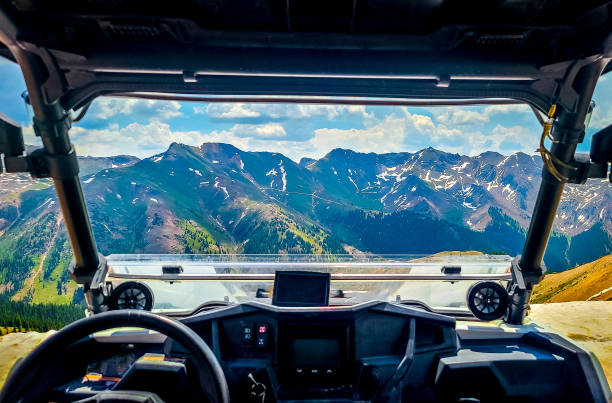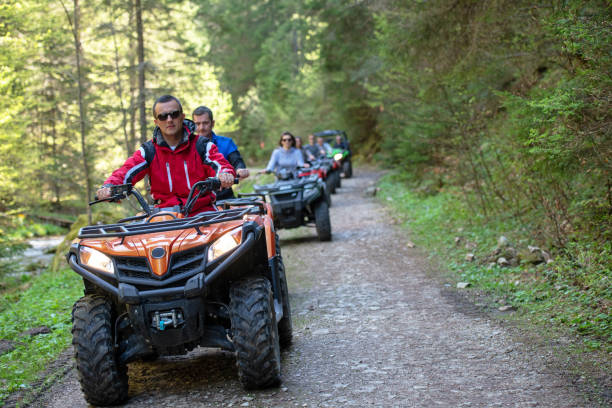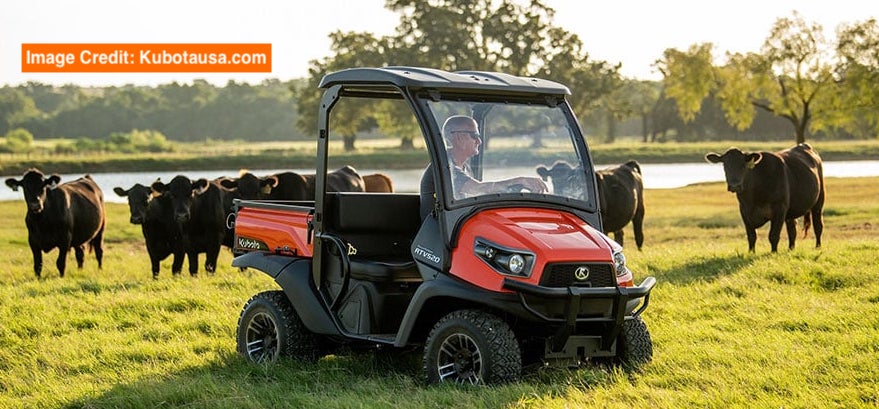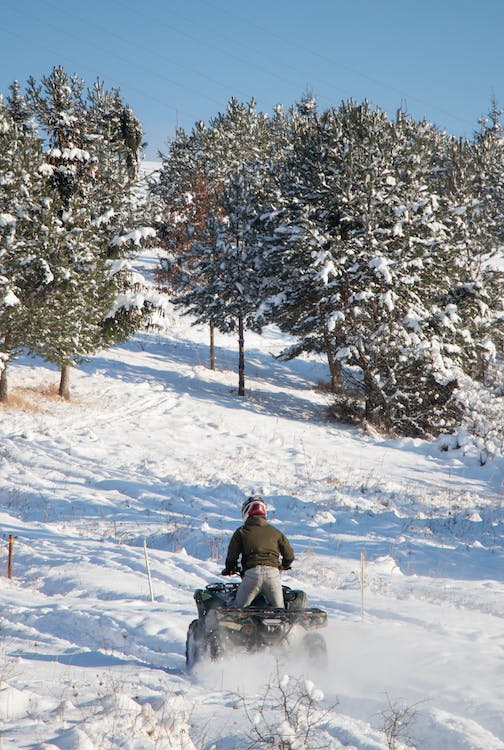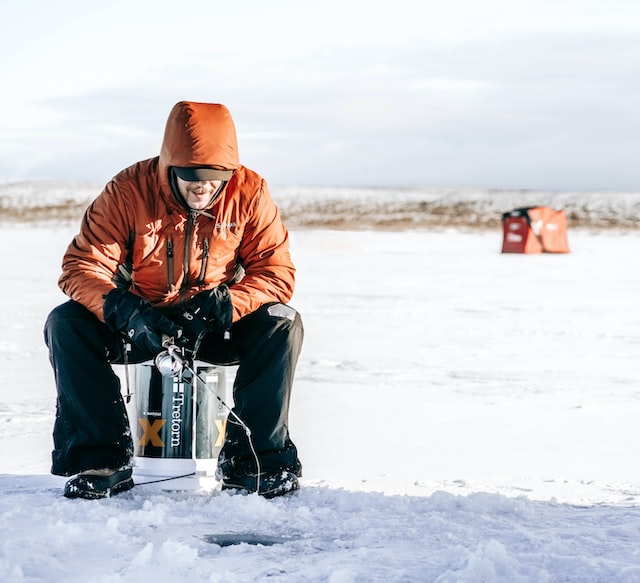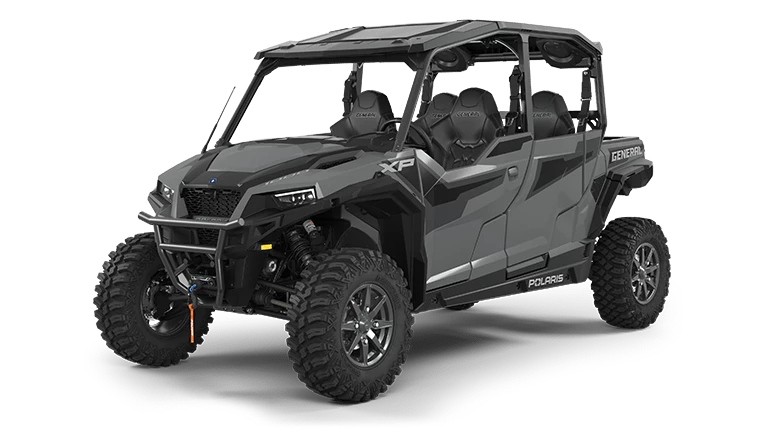As an Amazon Associate I may earn a commission from qualifying purchases at no additional cost to you.
Navigating the intricacies of ATV and Side by Side trails requires both awareness and courtesy, ensuring a harmonious experience for all riders.
ATVs and Side by Sides differ significantly in width, presenting potential challenges on narrower trails. Understanding the appropriate passing procedures can enhance riding experience and trail sustainability.

Riders should focus on clear communication and mutual respect while sharing trails.
Knowledge about specific trail rules is crucial, as these can vary depending on location and trail type.
Proper education on passing etiquette not only prevents mishaps but also contributes to a safer and more enjoyable environment for everyone involved.
Performance considerations come into play when maneuvering different types of vehicles on shared trails.
Riders should be mindful of the capabilities and limitations of both ATVs and Side by Sides.
Responsible trail use extends beyond personal enjoyment and fosters the long-term sustainability of these recreational areas.
Understanding the Basics of ATV and Side by Side Navigation

Off-road navigation varies between ATVs and Side by Sides due to differences in vehicle type and performance.
Recognizing these differences is crucial for effective handling on trails.
Types of Off-Road Vehicles
ATVs are often smaller, single-rider vehicles equipped with handlebars and a straddle seat. They offer maneuverability in tight spaces and are often preferred for solo adventures.
Typically, ATVs are lighter than Side by Sides, making them suitable for narrow or complicated trails.
Side by Sides are larger and have a steering wheel and side-by-side seating. They usually accommodate two to six passengers, providing a more social ride experience. These vehicles excel at carrying cargo and have more robust suspension, making them apt for rougher terrains.
Differences in Handling and Performance
Handling requires different skills for each vehicle. ATVs rely on body weight shifting for turns and balance, demanding active rider engagement.
In contrast, Side by Sides’ steering wheel and larger size afford a more car-like control, allowing for simpler operation.
Performance differences include the ATV’s light frame optimizing it for speed and nimble movements. This contrasts with the Side by Side’s emphasis on stability and power, suited for hauling passengers and gear over uneven terrain. The larger engine and suspension of Side by Sides facilitate handling more challenging paths with comfort.
Trail Etiquette for Responsible Riding
Riders must prioritize both courtesy and safety to ensure an enjoyable experience for everyone.
Understanding proper trail sharing principles and adopting courteous behaviors can help prevent conflicts and preserve the integrity of the trails.
Trail Sharing Principles
Trail designs often accommodate multiple types of off-road vehicles, like ATVs and side-by-sides. Clear signage at entry points outlines specific guidelines on right-of-way and designated paths.
Riders should follow these guidelines closely.
When encountering other vehicles, it is crucial to slow down and communicate intentions with hand signals or horn alerts.
Education about these principles is typically provided by local riding clubs and community boards.
Forest and county roads often serve as shared spaces for various outdoor enthusiasts.
It’s essential for riders to be aware of trail conditions and environmental conservation practices.
Staying on designated paths helps maintain the trails for all users and protects local ecosystems.
Courtesy Tactics for Riders
Courtesy on the trails includes yielding when necessary and maintaining a safe, controlled speed.
Heavier or larger vehicles, like side-by-sides, should be especially mindful of smaller or more maneuverable ATVs when passing.
Riders should announce their presence when approaching others from behind, either verbally or with a bell or horn.
The use of mirrors helps drivers keep track of others to avoid surprise encounters.
Familiarizing oneself with trail etiquette through clinics or rider education forums reinforces these tactics.
This ensures a safe and enjoyable experience for all, regardless of vehicle type or trail used.
Width Considerations for Different Trail Types

Width considerations for different trail types require assessing the compatibility of Side by Side vehicles with the specific dimensions. This involves recognizing areas where trails are especially narrow and adapting to changing trail conditions effectively.
Assessing Vehicle Fit on Trails
Side by Side vehicles vary in width, and ensuring their compatibility with trails is crucial.
Before embarking on a journey, riders should verify width specifications at the trailhead. Many trails provide information on maximum vehicle width, which can prevent potential damage to the environment and the vehicle.
Narrow trails might not accommodate wider vehicles.
It’s essential to check trail guides and maps for width restrictions. Using measuring tools or the manufacturer’s specifications ensures appropriate vehicle selection.
Attention to these details enhances safety and minimizes environmental impact. Compliance with these specifics is necessary for a seamless and environmentally conscious trail experience.
Navigating Narrow Paths
Narrow paths pose challenges for wider vehicles. When encountering these areas, riders should proceed with caution.
Slow speeds allow for better control and reduce the risk of unintended off-trail excursions.
Clear communication among group members helps facilitate smooth navigation.
Coordination allows single-file travel, reducing the chance of obstructing the path for other trail users.
Vehicles close to the maximum width should be cautious, as even small deviations can impact flora, fauna, and trail integrity.
Adapting to Varying Trail Conditions
Trail conditions can affect how width considerations should be approached.
Weather conditions might alter trail width, with mud or erosion creating narrower paths.
Riders must stay updated on trail conditions via local resources or online platforms, as these conditions can change rapidly.
Adapting to these variations can be achieved by choosing tires suitable for different terrains.
Flexibility in route planning accommodates changing environments, allowing riders to alter their course when necessary.
This adaptive approach ensures the preservation of trails while maintaining safety for all participants.
Sustainable Riding and Environmental Best Practices

Riders have a responsibility to protect natural environments while enjoying ATV and side-by-side trails. This involves reducing impact on natural areas and participating in trail conservation efforts.
Minimizing Impact on Nature
Sustainable riding prioritizes the protection of natural ecosystems.
Riders should stick to established trails to avoid damaging vegetation. This prevents soil erosion and maintains the habitat for wildlife.
Avoid creating new paths. New paths can quickly lead to environmental degradation.
Vistas and scenic spots are there to enjoy, but it’s crucial to stop only in designated areas.
Leave no trace principles are essential.
Riders should pack out all trash and waste. Using biodegradable cleaning products for ATV maintenance can also help reduce chemical runoff into natural areas.
Trail Maintenance and Conservation
Active participation in trail maintenance is crucial for sustainable riding.
Regular upkeep of trails prevents erosion and preserves pathways for future use.
Volunteering for trail conservation projects offers riders an opportunity to contribute positively. This can involve tasks like clearing debris or repairing damaged sections.
Funding for trail maintenance can be boosted by participating in community events or donating to local conservation groups.
These funds often support trail repairs and the creation of sustainable developments to minimize environmental impact.
Public education, about the importance of such maintenance, helps ensure everyone can enjoy and respect the natural beauty of shared spaces.
Safety and Preparedness on the Trail

Trail safety and preparedness are essential for a secure and enjoyable riding experience. Focus on equipping riders with appropriate safety gear and ensure compliance with registration and trail requirements.
Safety Gear and Emergency Protocols
Wearing suitable safety gear is non-negotiable for ATV and Side by Side users.
Helmets should meet DOT standards, and protective clothing such as gloves, goggles, and sturdy boots are vital. Chest protectors and knee guards add additional safety layers.
Beyond gear, an understanding of emergency protocols is crucial.
Carrying a well-stocked first-aid kit ensures readiness for minor injuries. Riders should know basic first-aid principles and emergency contact numbers.
Using technology like GPS and tracking devices can assist in alerting for help if needed.
Education on trail-specific hazards can minimize risks and enhance overall safety.
Rider Registration and Compliance
Proper registration of vehicles is a crucial step for legal trail use.
Riders must ensure their ATVs and Side by Sides are compliant with state regulations and visibly display registration stickers. This helps in identification and promotes responsibility.
Trail permits may be required to access public lands, ensuring conservation and trail maintenance.
Riders should familiarize themselves with local trail rules and regulations.
Regular vehicle inspections ensure optimum performance, preventing breakdowns that could lead to emergencies. Compliance isn’t just a legal matter; it’s integral to a safe and enjoyable riding experience.
Multi-Use Trail Dynamics
Multi-use trails host a variety of activities, requiring careful consideration from all participants. The interactions and behavior on these trails ensure harmony, safety, and enjoyment for everyone using them.
Accommodating Various Trail Users
Accommodating multiple users on a trail involves understanding the diverse needs and experiences of each group.
ATVs and side-by-sides often require wider paths to navigate, impacting trail design. Hikers, on the other hand, may prioritize quieter, less disturbed paths.
Trail designers must carefully balance these needs.
Cyclists and ebike riders add another dimension, requiring smooth, well-maintained surfaces suitable for higher speeds. Mountain biking enthusiasts might appreciate more rugged terrains, yet still pose speed-related risks.
To achieve shared usage compatibility, flexible trail management plans that adapt to seasonal changes—a trail ideal for cross-country skiing in winter might be perfect for hiking in spring—help cater to varied activities.
Respect for Hikers and Non-Motorized Activities
Ensuring respect for hikers and non-motorized users involves promoting etiquette among motorized users.
Quiet zones might be implemented where snowshoeing or petite hikes are prevalent, protecting the experience of these participants.
Cyclists should yield to foot traffic, as they can pose safety risks due to speed.
A system of clear signage is beneficial, educating users on proper trail etiquette and expected behavior.
By clearly marking designated zones for specific activities, conflicts are minimized, allowing everyone to enjoy their chosen pastime safely.
Educating all parties about mutual respect and understanding between different trail users fosters an environment of shared responsibility, enhancing the trail experience across various activities.
Trail Signage and Wayfinding
Effective trail signage is critical for the safety and enjoyment of ATV and Side by Side riders. It guides them through various terrains and ensures they are aware of trail conditions and rules.
Importance of Trail Signage for Safety
Trail signage plays a pivotal role in ensuring rider safety.
Clear markers prevent accidents by notifying riders of potential hazards and directional changes.
At trailheads, signage outlines critical information, such as trail difficulty levels, safety regulations, and environmental protection guidelines.
This supports sustainability by educating riders on how to minimize their impact on the environment. Without adequate signage, riders might find themselves on trails not suitable for their experience level, increasing the risk of accidents.
Visibility and maintenance of signage are essential.
Durable materials like metal or treated wood resist weathering and vandalism, ensuring signs remain legible.
It’s important that signs are positioned at eye level and are reflective for night riders, making them easier to spot in low-light conditions.
Well-maintained trails with appropriate signage support a positive riding experience.
Understanding Signage for ATV and Side by Side Trails
Understanding the various types of signage on ATV and Side by Side trails is crucial.
Typical signs include directional arrows, speed limits, and notices about width restrictions.
Riders should note width considerations to avoid trails that cannot accommodate their vehicle size.
Trail markers are often color-coded or use symbols to relay information quickly.
For instance, a red triangle may signal a steep descent, while a green circle indicates an easy trail suitable for all vehicles.
By familiarizing themselves with these signs, riders can navigate trails more confidently and responsibly, ensuring a safe, enjoyable ride for themselves and others.
The presence of universally recognized symbols aids in effective communication, reducing the likelihood of misunderstandings.
Recreational Opportunities and Trail Experiences
Exploring various trails can unfold breathtaking vistas and promote a deeper connection with nature.
Enthusiasts often seek to balance their thrill for adventure with responsible trail use, ensuring conservation remains a priority.
Discovering Scenic Vistas and Routes
Trail-based recreation offers the chance to enjoy diverse landscapes.
Michigan, known for its picturesque routes, provides stunning vistas along its winding trails.
Riders on ATVs, Side by Sides, and even mountain bikers can experience the state’s natural beauty firsthand.
Scenic landmarks often dot these trails, making stops both rewarding and memorable.
Whether it’s a forested path or a lakeside route, the experience invites exploration while encouraging riders to appreciate and respect their surroundings.
Safety and preparedness enhance the overall joy of outdoor travel here.
Balancing Adventure with Conservation
Engaging in trail adventures requires a commitment to conservation.
Enthusiasts are encouraged to adhere to trail guidelines that protect the environment while ensuring a safe experience.
This balance is crucial for maintaining trails and allowing sustainable access.
Riders should be mindful of trail width, especially when navigating areas designed for varying vehicle types.
Awareness and respect for posted regulations help preserve natural beauty and ensure all users can share trails responsibly.
Cooperation fosters a sense of camaraderie among outdoor adventurers.
Local Rules and Regulations
Navigating ATV and Side by Side trails requires awareness of specific local rules and regulations. Riders must consider boundaries and obtain the necessary permits to comply with legal requirements.
Understanding Boundaries and Legal Access
Trail boundaries are crucial for responsible riding.
Riders need to know which areas are legally accessible, recognizing both public and private lands.
Public lands often include county roads and forest roads which are accessible with the proper authorization.
Private lands might require explicit permission from the landowner.
Trail guides are valuable for riders to identify legal trails.
It’s important to respect barriers and signage, which help enforce access limits. Knowing these boundaries prevents unintentional trespassing and promotes a safe riding environment.
Registration and Permit Requirements
Riders must ensure their ATVs and Side by Sides are registered according to local laws.
Most areas mandate vehicle registration, which can include displaying a visible decal. Details of registration often vary by state or region.
Acquiring the correct permits is equally essential.
Permits might differ for different trail types or regions.
Riders should consult local authorities or trail management offices to understand specific permit requirements.
Compliance with registration and permit regulations enables riders to enjoy the trails legally and responsibly. Proper documentation also helps maintain trail conservation efforts.
Trail Design and Infrastructure
Effective trail design and infrastructure play a crucial role in supporting both ATV and Side by Side use. Sustainable methods reduce impact on natural environments, while advanced infrastructure accommodates the unique requirements of motorized vehicles.
Innovations in Trail Building for Motorized Vehicles
Recent advancements in trail design focus on sustainability, ensuring minimal disruption to ecosystems.
Builders incorporate erosion-resistant materials and strategically placed water drainage systems. These innovations maintain trail integrity over time, particularly during heavy rainfall.
Incorporating longer sightlines and wider paths enhances safety.
This accommodation is critical for vehicles like Side by Sides, which require more space than traditional ATVs.
Flexible trail design caters to multi-use paths, adaptable for both recreational and utility activities, reflecting an integration with existing logging roads.
Infrastructure to Support ATV and Side by Side Use
Modern trail systems often include infrastructure such as parking areas and rest facilities. These are strategically placed for convenient access and contribute to a harmonious recreational experience.
Signage indicating trail difficulty and permitted vehicle types helps riders make informed decisions.
Dedicated maintenance programs ensure that trails remain safe and accessible. These programs involve routine inspections and repairs to prevent wear from heavy vehicle use.
The integration of infrastructure and design promotes a cohesive environment where both ATV and Side by Side riders, as well as cyclists on shared paths, can coexist peacefully.

